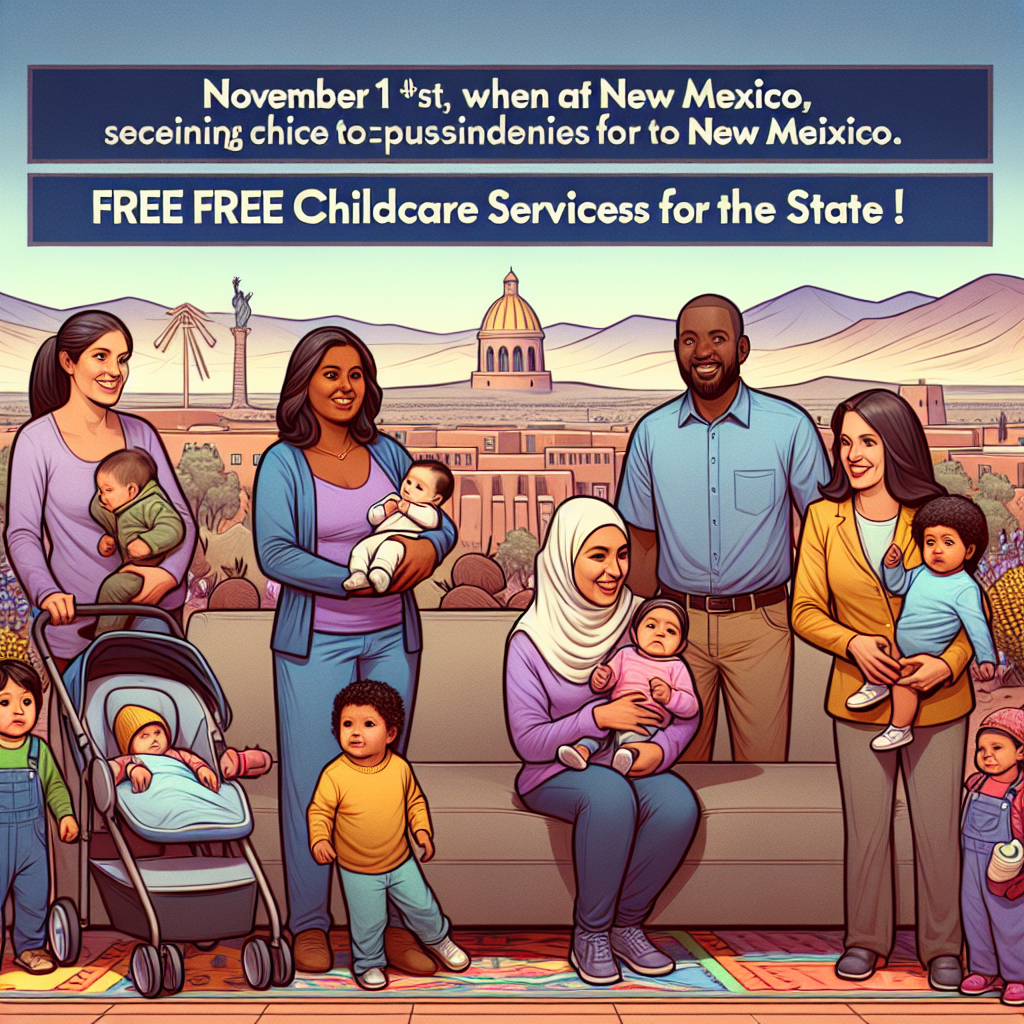On Saturday, November 1st, New Mexico became the first state in the United States to provide free childcare services to all residents across the state. Under the newly implemented policy, all families in the state, regardless of income level, are eligible to receive subsidies from the state government to cover the costs of childcare at both public and private facilities.
By joining the ranks of countries like Norway and Belgium, New Mexico now offers free universal childcare for children under the age of three, following Bulgaria’s lead in implementing free preschool education up to elementary school. Going even further, New Mexico has expanded its free childcare services to children up to thirteen years old.
To achieve this goal, the Democratic-led state will need to add nearly 14,000 new childcare slots, recruit 5,000 educators, and establish a $12.7 million low-interest loan fund for the construction and expansion of childcare facilities. Additionally, the state will raise subsidy standards for qualifying childcare facilities, requiring entry-level staff to be paid at least $18 per hour (above the state’s minimum wage of $12) and to provide full-day childcare services.
Governor Michelle Lujan Grisham stated that childcare services are the “cornerstone of building a family support system, enabling parents to work, attend college, and take care of necessary tasks to advance New Mexico’s poverty reduction process.”
According to U.S. Census Bureau data, nearly 18% of New Mexico residents live below the poverty line, making it one of the poorest states in the nation. With an area slightly larger than England and a population of 2.1 million, the state’s universal childcare program is mainly funded by the oil and gas industry, ranking second in size nationwide.
Research by Neal Halfon, a pediatric professor at the University of California, Los Angeles (UCLA), shows that New Mexico students’ reading levels at age eight or nine are significantly below the national average.
The Annie E. Casey Foundation has consistently ranked New Mexico as one of the worst-performing states in education and child welfare nationwide.
Teacher Allyson O’Brien from Taos anticipates saving about $12,000 per year on childcare expenses for her nearly two and a half-year-old son. Her husband is a truck driver, and their family of four’s income slightly exceeds the previous income cap of $129,000 for free childcare in New Mexico.
She remarked, “We can finally go on vacation without having to decide between paying for gas or the mortgage first.”
Alison McPartlon, director of the University of New Mexico Taos Child Development Center, described the transition to universal childcare as “amazing,” predicting that “more childcare centers will be established in the future.” The waiting list for her center is long, making admission challenging, but the increased subsidy standards will help retain existing teachers and recruit new ones.
Philip Fisher, a professor of early childhood learning at Stanford University, pointed out that research shows high-quality childcare services can improve educational outcomes, especially for children from low-income families.
Republican New Mexico State Assemblywoman Rebecca Dow and other critics argue that research indicates the ideal environment for early childhood growth is within the family, suggesting that the state should offer tax breaks to allow mothers to stay at home and care for their children.
Rebecca Dow herself is the founder of a childcare center. She bluntly stated that the resources currently available are insufficient to meet the demand, leaving the public ultimately disappointed.
The Democratic-led state of Connecticut recently passed a similar bill, providing free childcare services to families with incomes below $100,000, while higher-income families will pay no more than 7% of their income for childcare. Democratic New York City mayoral candidate Zohran Mamdani has also proposed a universal free childcare plan.
(This article was adapted from a report by Reuters.)

